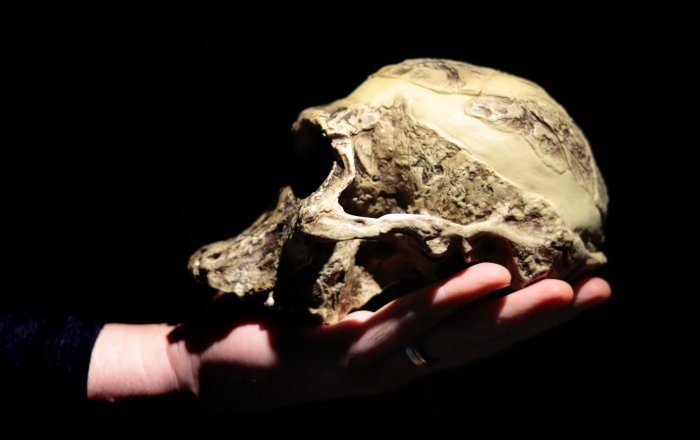Jan Bartek – AncientPages.com – In testing the genetic material of current populations in Africa and comparing against existing fossil evidence of early Homo sapiens populations there, researchers have uncovered a new model of human evolution, overturning previous beliefs that a single African population gave rise to all humans.
“This uncertainty is due to limited fossil and ancient genomic data, and to the fact that the fossil record does not always align with expectations from models built using modern DNA,” she said. “This new research changes the origin of species.”

Model of human ancestor skull. Credit: Adobe Stock – Ivan
Research co-led by Henn and Simon Gravel of McGill University tested a range of competing models of evolution and migration across Africa proposed in the paleoanthropological and genetics literature, incorporating population genome data from southern, eastern and western Africa.
The authors included newly sequenced genomes from 44 modern Nama individuals from southern Africa, an Indigenous population known to carry exceptional levels of genetic diversity compared to other modern groups. Researchers generated genetic data by collecting saliva samples from modern individuals going about their everyday business in their villages between 2012 and 2015.
The model suggests the earliest population split among early humans that is detectable in contemporary populations occurred 120,000 to 135,000 years ago, after two or more weakly genetically differentiated Homo populations had been mixing for hundreds of thousands of years. After the population split, people still migrated between the stem populations, creating a weakly structured stem. This offers a better explanation of genetic variation among individual humans and human groups than do previous models, the authors suggest.
“We are presenting something that people had never even tested before,” Henn said of the research. “This moves anthropological science significantly forward.”
“Previous more complicated models proposed contributions from archaic hominins, but this model indicates otherwise,” said co-author Tim Weaver, UC Davis professor of anthropology. He has expertise in what early human fossils looked like and provided comparative research for the study.
The authors predict that, according to this model, 1-4% of genetic differentiation among contemporary human populations can be attributed to variation in the stem populations. This model may have important consequences for the interpretation of the fossil record. Owing to migration between the branches, these multiple lineages were probably morphologically similar, which means morphologically divergent hominid fossils (such as Homo naledi) are unlikely to represent branches that contributed to the evolution of Homo sapiens, the authors said.
The study was published in the journal Nature
Written by Jan Bartek – AncientPages.com Staff Writer





